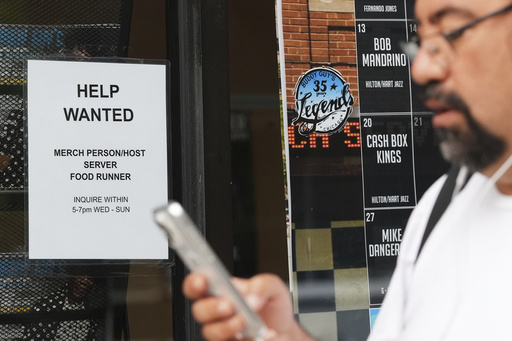If one were to glance over a typical 2025 mass layoff notice from a tech sector CEO, there might be an instinctual reaction to blame artificial intelligence for the job losses. However, beneath the surface, the story is considerably more intricate, as companies signal to Wall Street their intentions of becoming more efficient amidst the broader transformations AI brings.
Recent findings released by the career platform, Indeed, reveal that tech job postings witnessed a 36% drop in July compared to early 2020 statistics. While AI is surely an influential factor in slowing the information technology comeback, it hasn’t played the most prominent role. The launch of ChatGPT at the tail end of 2022 coincided with the cessation of the hiring spree witnessed during the pandemic, convoluting the assessment of AI’s specific influence in the subsequent hiring stagnation.
Brendon Bernard, an economist at the Indeed Hiring Lab, remarked, “We’re in a period where the tech job market appears weak. However, other sectors within the job market have experienced a similar slowdown.” He added, “The trends in tech job postings align with the overall economy, including sectors with limited AI exposure.”
The blueprint for tech CEO layoff announcements in 2025 often includes a reference to AI pivots, yet the subtleties aren’t always conveyed straightforwardly through layoff emails circulated over recent months. These messages frequently mention AI amid expressions of empathy. For instance, when Workday CEO Carl Eschenbach announced significant layoffs earlier this year, he urged employees to foresee broader perspectives, emphasizing, “Companies globally are redesigning workflows, and mounting AI demand offers the potential for a new growth chapter at Workday.” Similarly, Autodesk’s CEO, Andrew Anagnost, cited shifting resources to “accelerate investments” in AI as a rationale behind slashing 1,350 jobs. Likewise, CrowdStrike’s CEO, George Kurtz, explained that the cybersecurity firm required intensifying AI investments to “enhance execution and efficiency,” further accentuating, “AI flattens our hiring curve and propels product innovation.”
This trend is not limited to the United States. Indian tech heavyweight, Tata Consultancy Services, recently framed its decision to lay off 12,000 employees, which accounts for 2% of its team, in alignment with the aspirations of becoming a “Future-Ready organization” deploying wide-scale AI for clients and internally. Interestingly, even the Japanese parent company operating Indeed and Glassdoor referenced an AI pivot in its layoff notification affecting 1,300 positions.
A more prevalent factor seems to be a spike in AI spending rather than direct replacement. For example, Microsoft, which is on the brink of announcing its fourth-quarter earnings, revealed plans to lay off roughly 15,000 employees this year despite enjoying a substantial rise in profits. Microsoft’s CEO, Satya Nadella, expressed concerns to employees about the layoffs while simultaneously framing them as a chance to reimagine the company’s mission in the AI epoch. Wall Street has embraced promises of a leaner operational approach from tech behemoths advocating enormous capital expenditures to sustain data centers, chips, and other AI-fueling components.
Bryan Hayes, a strategist with Zacks Investment Research, noted, “Tech giants face a precarious restructuring challenge in the AI age as they aim to balance employee headcount with the emerging AI forefront.” Just last week, Google pledged an additional $10 billion to bolster its capital expenditure budget, raising the total to $85 billion. Meanwhile, Microsoft is also expected to furnish a similar financial roadmap soon.
Tracking AI’s role in job replacement can be perplexing. Nevertheless, Hayes asserts, “Microsoft’s job cuts could positively affect its profit margin outlook for the 2026 fiscal year.” Yet deciphering the implications of broader tech sector layoffs on tech workers’ employment prospects remains complex. “AI will indeed replace some jobs, but it’s also expected to generate numerous new opportunities. Those capable of harnessing artificial intelligence will contribute to innovation and product development, thereby becoming invaluable,” he explained. Furthermore, he cited Meta Platforms, the parent of Facebook and Instagram, actively pursuing elite AI talent from rivals like OpenAI by offering attractive compensation packages.
The reports released by Indeed underscore that AI specialists continue to fare better compared to traditional software engineers, although such positions haven’t reached their previous prominence. “Machine-learning engineers, considered the archetype of AI jobs, remain noticeably above their pre-pandemic levels though having receded since peaking in 2022,” noted Bernard, the Indeed economist. “Despite this, they remain subject to the cyclical fluctuations inherent in the tech sector.”
Economists are vigilantly observing the impact of AI on entry-level positions in the tech industry. Areas like San Francisco Bay Area, Boston, and Seattle, known as AI hubs, have particularly felt the plunge in tech hiring, as per Indeed’s data. A detailed examination of affected tech workers revealed that entry-level roles in marketing, administrative assistance, and human resources have suffered the steepest decline. These positions typically involve responsibilities overlapping with advanced generative AI capabilities adept at document and image creation.
“The decline in tech hiring started prior to the new AI age, but the emerging experience requirements are a relatively recent phenomenon,” remarked Bernard. Microsoft, with its future heavily anchored in AI’s workplace integration, has engaged its researchers to investigate job categories most susceptible to current AI technology capabilities. Microsoft’s working paper flagged knowledge-centric occupations such as language interpreters, translators, historians, sales representatives, writers, and customer support agents amongst the most vulnerable. Conversely, roles deemed less susceptible to AI shifts include phlebotomists, healthcare workers specializing in blood draws, nursing aides, workers handling hazardous material removal, painters, and embalmers.


